
Monkeys by Mori Sosen with inscription by Nakai Chikuzan
(1787): Held in the collection of the Osaka Museum of History
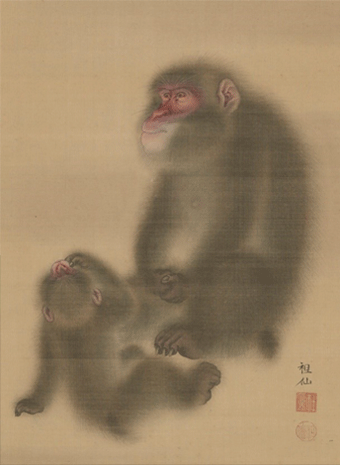
This painting is impressive for its realistic and detailed depiction of the monkeys’ soft fur. Paintings of monkeys by Sosen often have auspicious implications. For example, in this painting, the two monkeys can be seen as a mother and child, thus symbolizing family prosperity. After becoming famous for his paintings of animals, Sosen changed the first character of his art name to mean “animal,” which indicates his pride in being an animal painter.
Rooster on a Drum by Mori Yōshin
(Edo period, 18th to 19th century): Held in a private collection
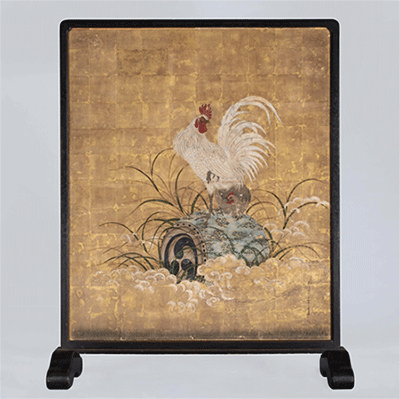
This is a work by Yōshin, the oldest brother of Sosen, and is thought to have been owned originally by the Kōnoike family, a wealthy merchant family in Osaka. The subject of this painting is an ancient Chinese tale: a ruler placed a drum and told his people to beat it when anyone noticed him doing something wrong, but thanks to his upright governance, the drum remained silent and eventually became a spot where roosters lived. This gorgeous painting is impressive for the dignified rooster with a clear white body on a gold-leaf background.
Toad Hermit by Mori Shūhō
(Edo period, 18th to 19th century): Held in a private collection
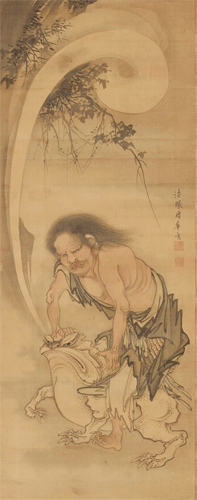
This painting depicts a toad hermit, a legendary wizard who played various tricks with toads. The toad with the hermit’s hand on its head is ejecting something mysterious from its mouth, with a humorous expression on its face. Shūhō enjoyed a reputation as one of the best Osaka-based painters, with his works covering a wide variety of subjects and techniques, including the Kanō-school style of landscape paintings and portraits, as well as animal paintings as realistic as those painted by his younger brother, Sosen.
Toad by Matsumoto Hōji, with inscription by Hatanaka Kansai
(Edo period, 18th century): Held in a private collection
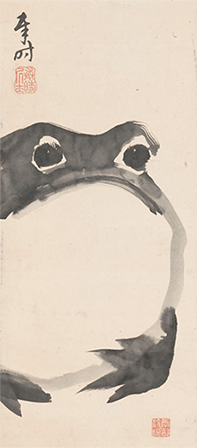
Matsumoto Hōji was a paper mounter in Osaka, who loved frogs so much that he kept those with a pleasant croaking sound as pets, and also collected dried frogs. He is known to have associated with Ito Jakuchū, famous for chicken paintings. Hōji was especially good at painting toads with swift brushstrokes using watery sumi ink.
Hell by Nichōsai
(1793): Held in the collection of the Osaka Museum of History
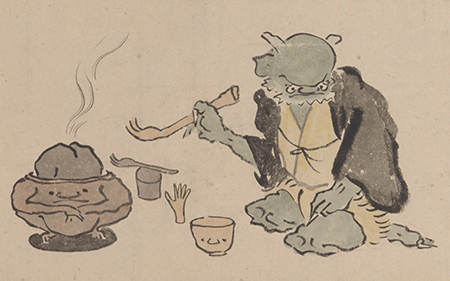
Nichōsai, who was reportedly engaged in sake brewing and dealt in antiques in Osaka, gained popularity with his caricatures of people. Especially, he is known for his paintings of various hells that awaited people of different occupations, which are depicted humorously despite his solemn words that he painted them to warn people against wrongdoing. One of these paintings, the “Hell of a Tea Master,” depicts a devil clad in a formal haori coat making tea using a kettle, bowl and tea scoop made from dead people.
